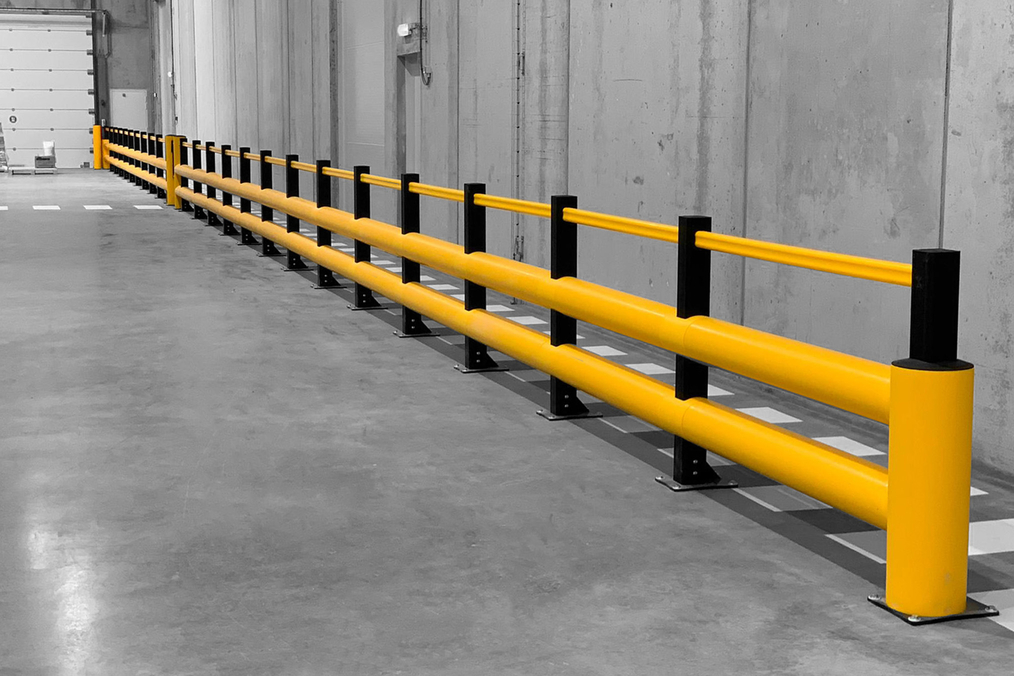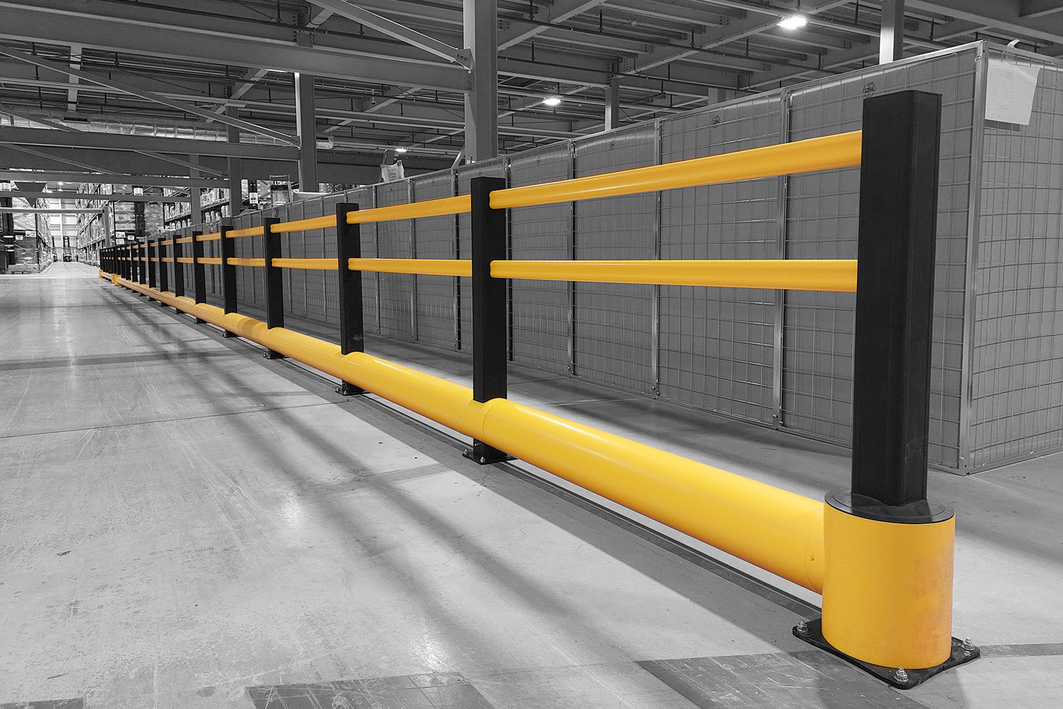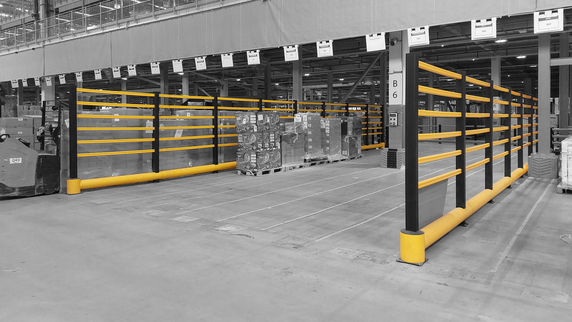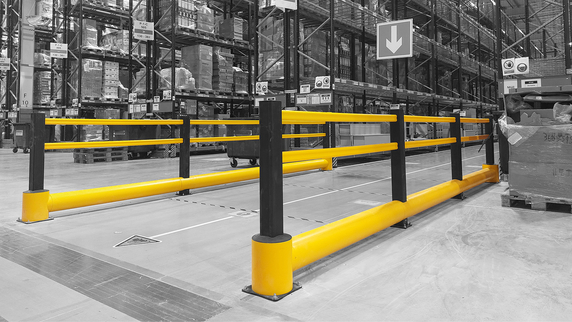Tips for developing a traffic plan: theory and practice
Transforming your work environment into a safe workplace cannot be done overnight. Although organizations prioritize employee safety, they often overlook the underlying processes. They pay insufficient attention to preventive measures and the efficient circulation of vehicles in their work environment. This is why developing a traffic plan is the next crucial step after conducting a risk assessment. A traffic plan outlines traffic flows and identifies bottlenecks.
The following tips will help you understand what a traffic plan entails in theory and practice.

What is a traffic plan?
A traffic plan identifies all the traffic flows and intersections that pedestrians, trucks, forklifts, and other vehicles follow in your organization. It provides an overview of traffic rules, circulation, bottlenecks, and hazardous situations across your site. It briefs employees and visitors, highlights key points of interest, and provides guidelines on safe conduct.
Why is a traffic plan essential?
A traffic plan is essential because it helps create a safe working environment for various users. Pedestrians, internal transport vehicles, and trucks all share the same space, creating major safety risks. A traffic plan shows you how to optimize these traffic flows and enhance safety.
What should be included in a traffic plan?
Developing a traffic plan is not a quick process. The first question to ask is: should I create the traffic plan alone or seek expert assistance? Even if you are familiar with your business environment, you might overlook some high-risk situations. In other words, seeking help is a good idea.
An effective traffic plan balances various aspects:
- Bottlenecks
Where do problems occur or potentially occur?
- Traffic flows
What modes of transportation move around your site and what routes do they take?
- Regulations and internal traffic rules
What are the traffic rules on-site? What are the rules for organizing goods within the company? Learn how to organize your warehouse more effectively.
- Accident prevention and worker protection measures
This involves substantial work, including drafting a clear evacuation plan and setting out floor plans with risk zones. Additionally, you will need to install the necessary signage and physical protection measures on-site. For instance, it is crucial to safely separate road users. Each user – pedestrians, forklifts, trucks – needs its own designated space. Clearly define how drivers and pedestrians should use the space and implement this through physical protection measures, such as safety barriers, bollards, handrails, safety gates, etc.
How to create a traffic plan
When developing a traffic plan, it is useful to work in phases.
- Inventory
The first phase involves mapping all traffic flows. You will also list existing resources, current traffic regulations, and signage.
During this phase, you talk to the safety manager, as well as the warehouse and production managers, forklift or pallet truck drivers, and other employees. They face these risks daily, so their input is crucial. Their involvement also makes them feel engaged, ensuring they will follow the rules and act as ambassadors.
- Identifying solutions
In the second phase, you will seek potential preventive solutions and protection products. These solutions should channel hazardous traffic flows and enforce new traffic rules. For example, you can implement various physical protection measures. Examine everything in detail with the goal of making the workplace safer.
- Establishing rules
In the third phase, you make arrangements to implement the traffic plan. Clear instructions in the form of rules and agreements enable you to execute the plan. The solutions are clearly communicated to ensure everyone is informed and there is no confusion. Decide which colors will be used for signage in the work environment as well as the rules, lines, and signs that should take priority.
- Agreements and guidelines
Implementation is the fourth and final phase. You need to rely on the commitment and cooperation of your internal staff and external parties.
How do you implement a traffic plan?
To implement a traffic plan, the first step is to install signage. This can be easily done using floor marking tapes. Floor marking tape can be used to indicate clear walking or driving zones, as well as the direction of travel and traffic routes for pedestrians and forklift operators. The markings also indicate the required distance between pedestrians and forklifts.
They can also designate different zones. Determine which areas can be designated for work, storage, or parking. This prevents lanes or pedestrian areas from being used for unloading goods.
To create a clear structure and understanding of the markings, use the following color definitions:
- Red: Prohibited area
- White: Storage area
- Yellow: Lanes and parking
- Green: Free zone
- Blue: Pedestrian zone
In addition to floor marking tape, you can use other signage methods. For instance, pictograms are good at attracting attention. We recommend following the ISO 3864 color scheme when applying safety markings and signs.
- Yellow with black letters: Caution and instructions to avoid damage/injury, warning
- Blue with white letters: Designation or obligation and protection
- Green with white letters: Help indicator, information
- Red framed sign with prohibited pictogram
- Red area with white letters: Emergency prevention
However, other colors can be used, such as orange safety markings for chemical storage. Gray and black line markers can be used to change lines that no longer match the current color scheme.
Thanks to floor marking tape, everyone knows exactly where to stand to work safely. It is essential that the markings used are carefully considered to meet the objectives. However, floor marking tapes are only a preventive measure. They do not provide protection against collisions or impacts. This is why it is also recommended to install physical protective measures.
Safety barriers can physically separate your road users and protect them from each other. They also protect infrastructure, vehicles, and machinery. Different products are available: barriers, bollards, handrails, kick rails, column protection, rack protection, safety gates, etc.
For information on how to apply polymer safety barriers in your industry, read our industry-specific white papers and discover the safety solutions most relevant to your situation.


